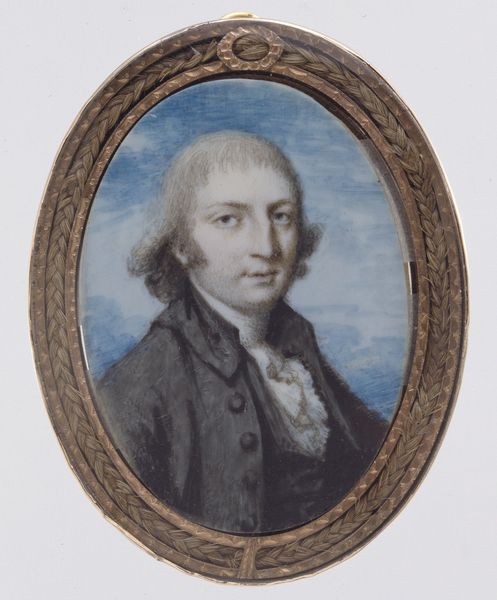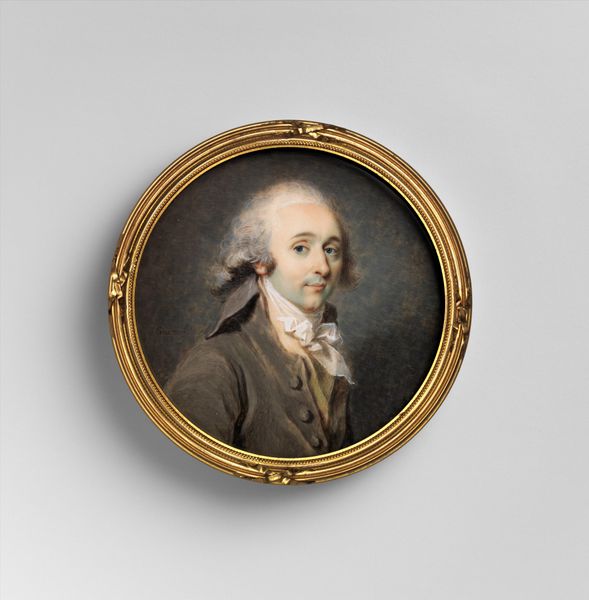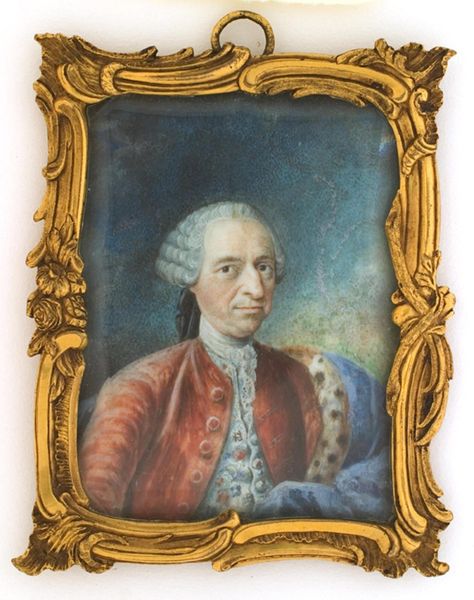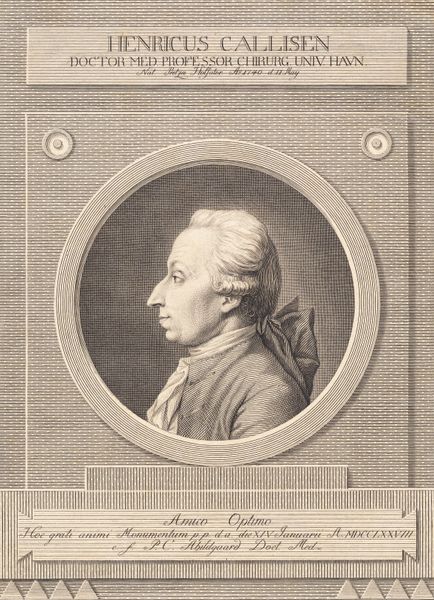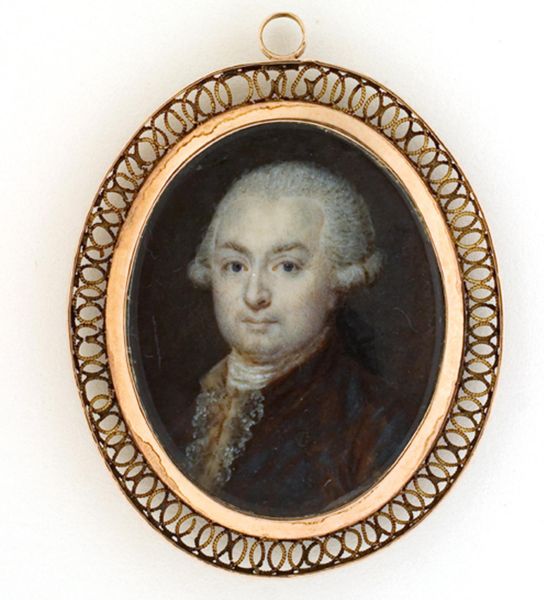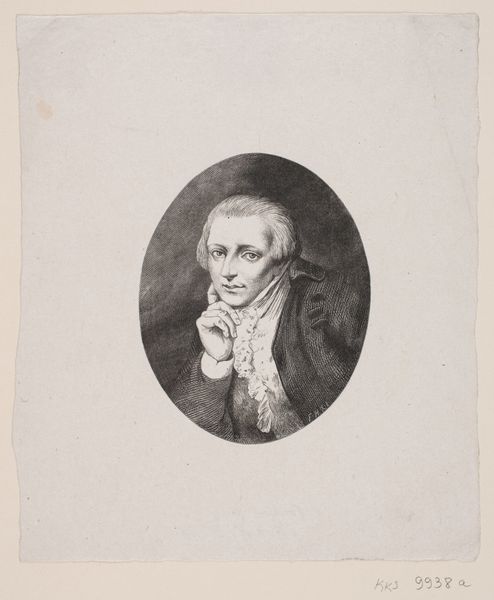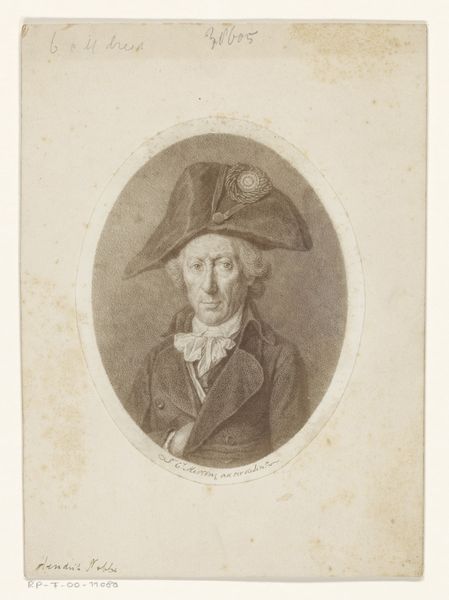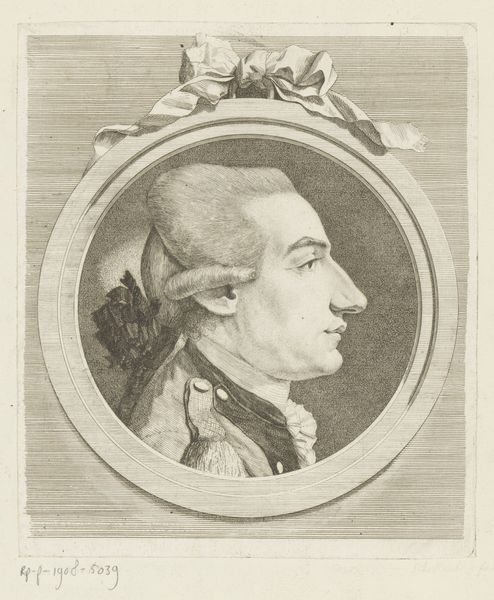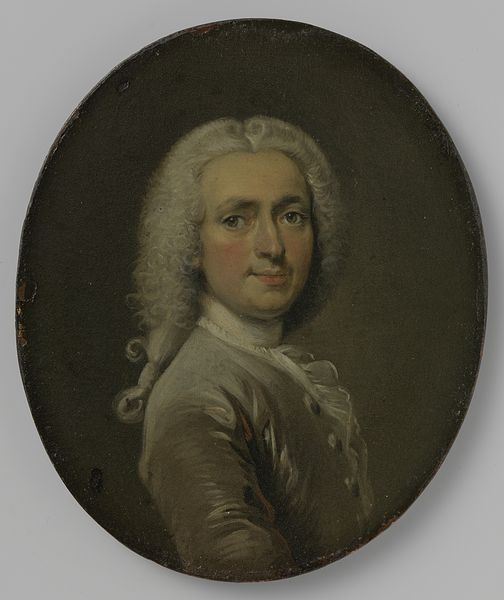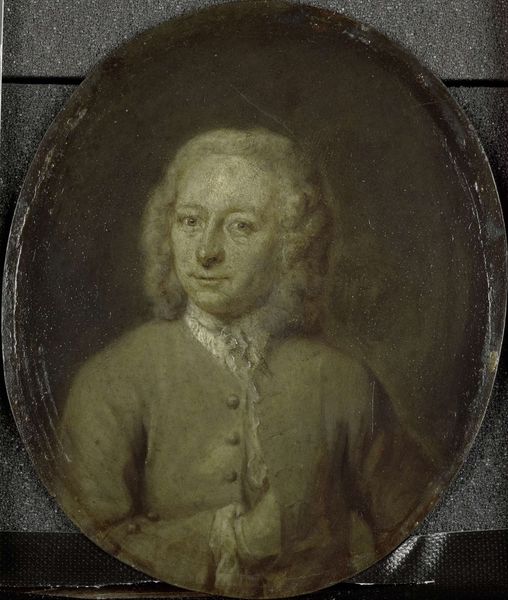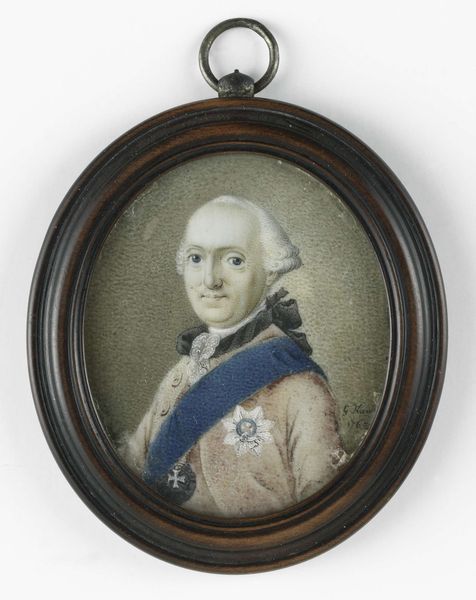
watercolor, ivory
#
portrait
#
oil painting
#
watercolor
#
romanticism
#
portrait drawing
#
ivory
#
miniature
Dimensions: 6 cm (height) x 4.6 cm (width) (Netto)
Curator: Here we have a piece titled "Ubekendt mand (kaldet \"General Classens gartner\")" or "Unknown Man (Called 'General Classens's Gardener')" created sometime between 1777 and 1844 by F.C. Camradt. It is a miniature watercolor and oil painting on ivory. Editor: It's quite striking how the sitter's gaze dominates this tiny surface. The portrait's symmetry is compelling. There’s something intensely focused about its visual organization. Curator: Indeed. In this type of intimate portrait, the gaze often serves as a connection between the subject and the intended owner, forming a bond of memory. Its small size meant it could be worn or carried. These objects served as tangible reminders of loved ones or admired figures. Editor: The reddish tonality also immediately stands out—in the man's cheeks, his vest, and the knot at his neck. Is that a purely aesthetic choice, or is there something more to it? Curator: The color likely enhances the perceived vitality of the subject, signifying good health and status. The red could also hold a political association with civic virtue, harking back to Roman ideals that were becoming fashionable once more in the Romantic period. The loose knot around his neck might hint at intellectual pursuits, in contrast to rigid, formal society. Editor: Do you see some tension here between romanticizing the subject, on the one hand, and adhering to conventional, classical ideas about order and rationality on the other? Curator: The artist definitely worked in both traditions, but his emphasis on conveying psychological intensity certainly suggests that Camradt was engaging with broader themes of the self that define the Romantic era. Though it remains anonymous, this “gardener’s” gaze seems to assert his presence and identity against the passing of time. Editor: Absolutely. These subtleties underscore its success in drawing our eye. Curator: It's always fascinating to look back at these seemingly modest objects and decipher the complex codes of status and memory they held. Editor: It reminds us to look closer at those "simple" faces in art and ponder the complexities behind their composition.
Comments
No comments
Be the first to comment and join the conversation on the ultimate creative platform.
